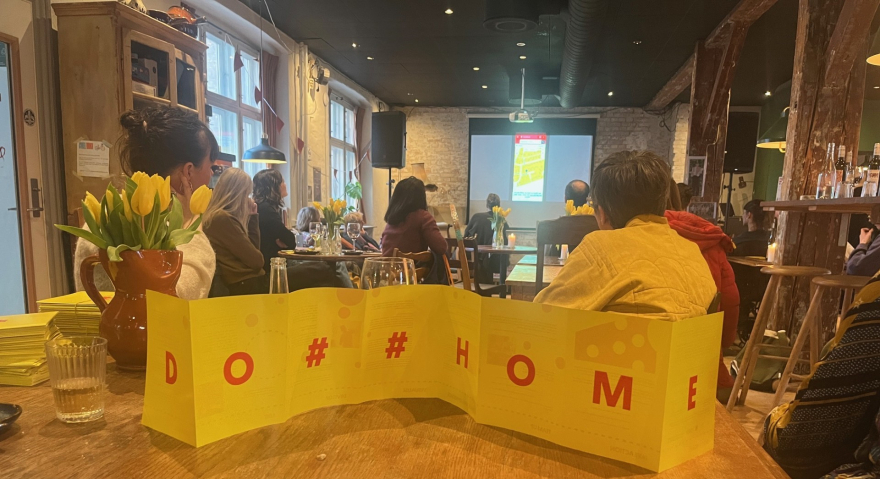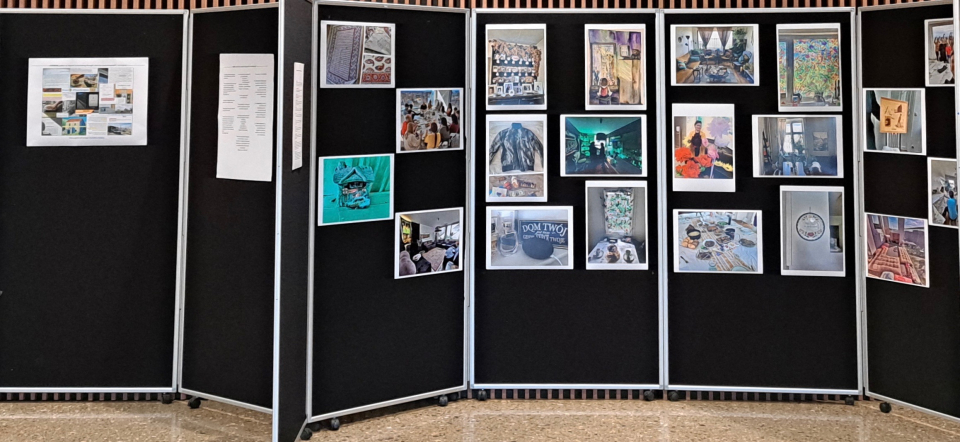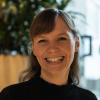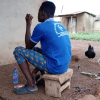Exhibitions, films, google earth walk-and-talks, and a legacy website. That are some examples of the creative outputs from the research project Making it Home: An Aesthetic Methodological Contribution to the Study of Migrant Home-Making and Politics of Integration (MaHoMe).
The aim of the project was to understand how migrants make sense of home in the United Kingdom, Sweden and Denmark through art-based methods.
“Policymaking on migration and integration is framed around the idea of home as the nation-state. In reference to migrants, refugees and asylum seekers, their home is defined as elsewhere. But that isn’t the experience of migration, it is much more complex and fluid. For migrants there is a previous home, in most cases multiple previous homes as people may have travelled through and stayed in various countries before arriving in say the UK. Home to them is about wishing to make a permanent, secure base, and to be part of and to contribute to that society,” says project leader Fran Lloyd, Professor of Art History at Kingston University London.
The predominant narrative in policymaking in all three countries includes a constraining element regarding the positionality of migrants. And the discussion surrounding migrants include, among other things, ideas of worthy and unworthy migrants, the association of migrants with criminality, and of not deserving a home, according to Lloyd.
“We wanted to try to dismantle and reconfigure the dominant narrative and understand what it really means on a day-to-day basis to be a migrant trying to build a home. That's one of the reasons why we developed films, held open screenings and had exhibitions, it was an effective way of engaging different communities in this debate and attracting policy administrators and policymakers of all levels,” she says.

Community building through art-based methods
The project worked closely with Non-Governmental Organizations (NGOs) and artist facilitators as well as people who identify themselves as migrants as co-researchers in all three countries. The project included a series of aesthetic workshops created together with the NGOs and a set of workshops were also held after local open calls.
“We wanted to engage people locally and involve them in the workshops. A lot of research in the social sciences has refugees, asylum seekers, or migrants as interlocuters, but I think what was distinctive with the structure of this project is that we partnered with the NGOs and artists from the beginning. Towards the end of the project, they would again come together to pool their knowledge, so that it provided them with a wider network. Working with art-based methods is slow but it brings people together, and I think that was one of main the values of the project,” says Lloyd.
Practical outcomes and toolboxes
In all three countries the outcome of the workshops varied a bit. In the case of the UK, for example, they were organized so that all the participants gained experience of working with photography, film, sound production, and script writing.
“Participants also acted out short scenarios related to different aspects of migration in small groups. Migration and integration are sensitive topics, so the workshop processes were much about articulating the shared experiences and coming up with different actions,” says Fran Lloyd.
As a concrete action, the project developed two different toolboxes now freely available on the project website. One for groups or organisations that want to set up similar workshops including ethical guidelines and practical do and don’ts. The other, Lloyd calls the do-it-yourself toolbox and it’s an eight-step way of exploring what home and homemaking means. It is aimed at anyone who wants to try taking a simple set of exercises for visual imagining of home.

Importance of the mobile phone for homemaking
An intrinsic part of making sense of home is finding community and feeling valued in that community. That was one of the main findings of the project.
“What came through from the project, which was very interesting, was that even though the migrants weren’t settled in very conducive environments, they consciously set up a place of value and create a sense of agency for themselves. Young refugees, for example joined NGOs in order to gain skills and increase their self-esteem,” Lloyd says.
Another thing the project observed was how traces of hope are carried into the everyday lives of migrants through things like food, music, photographs, or items of clothing. As part of the art-based practice the project focused especially on mobile phones.
“Mobile phones can be used in research in various ways, for recording of images, as a storehouse of memories and so on. Certainly, one of our findings was how central the mobile phone was to the migrant communities. It was absolutely vital for keeping in contact with family and friends still living in past homes, but also in discovering their new environment. On that level it was the way that people situated themselves whether it was Denmark, Sweden or the UK”, says Lloyd.



